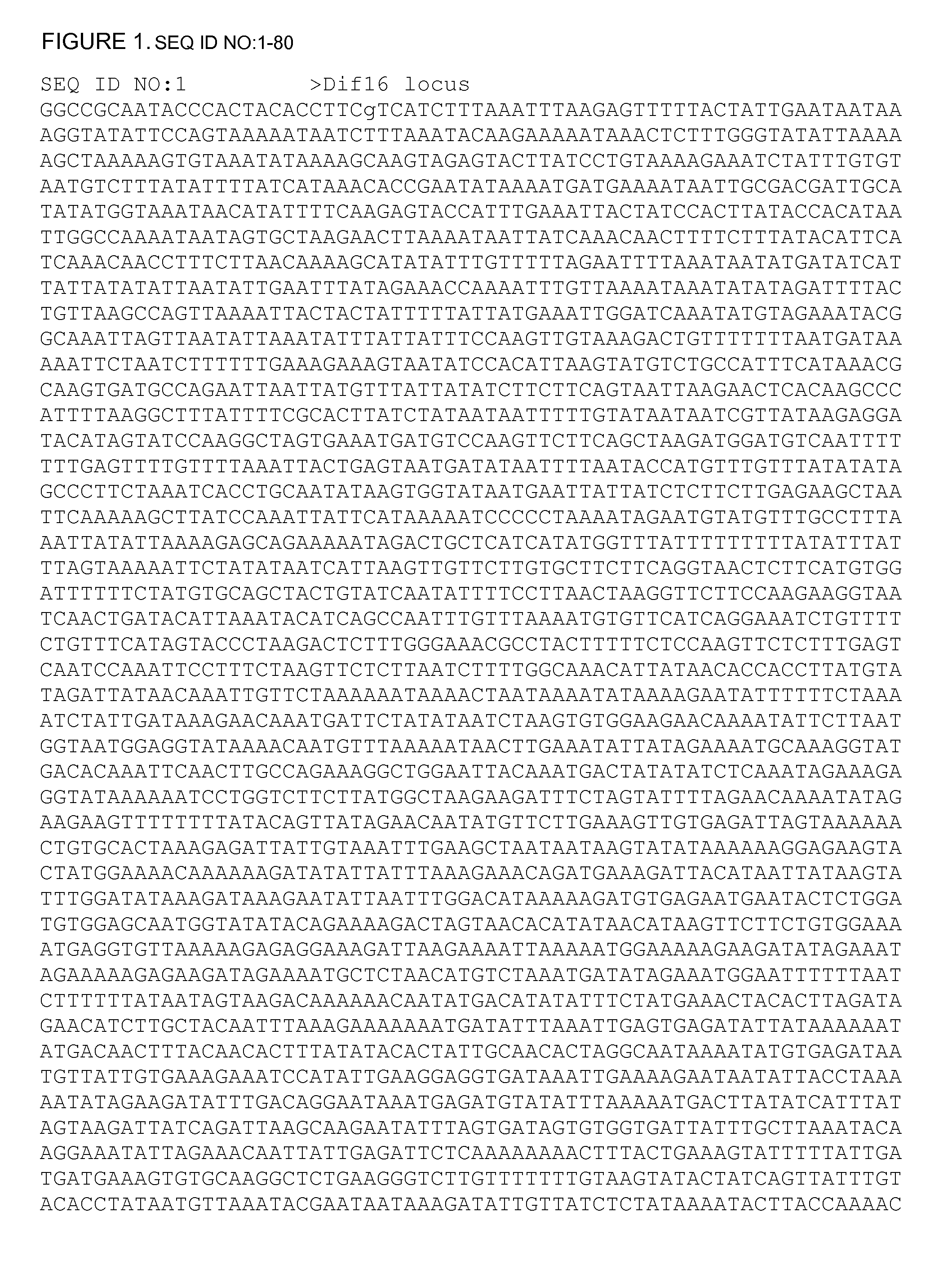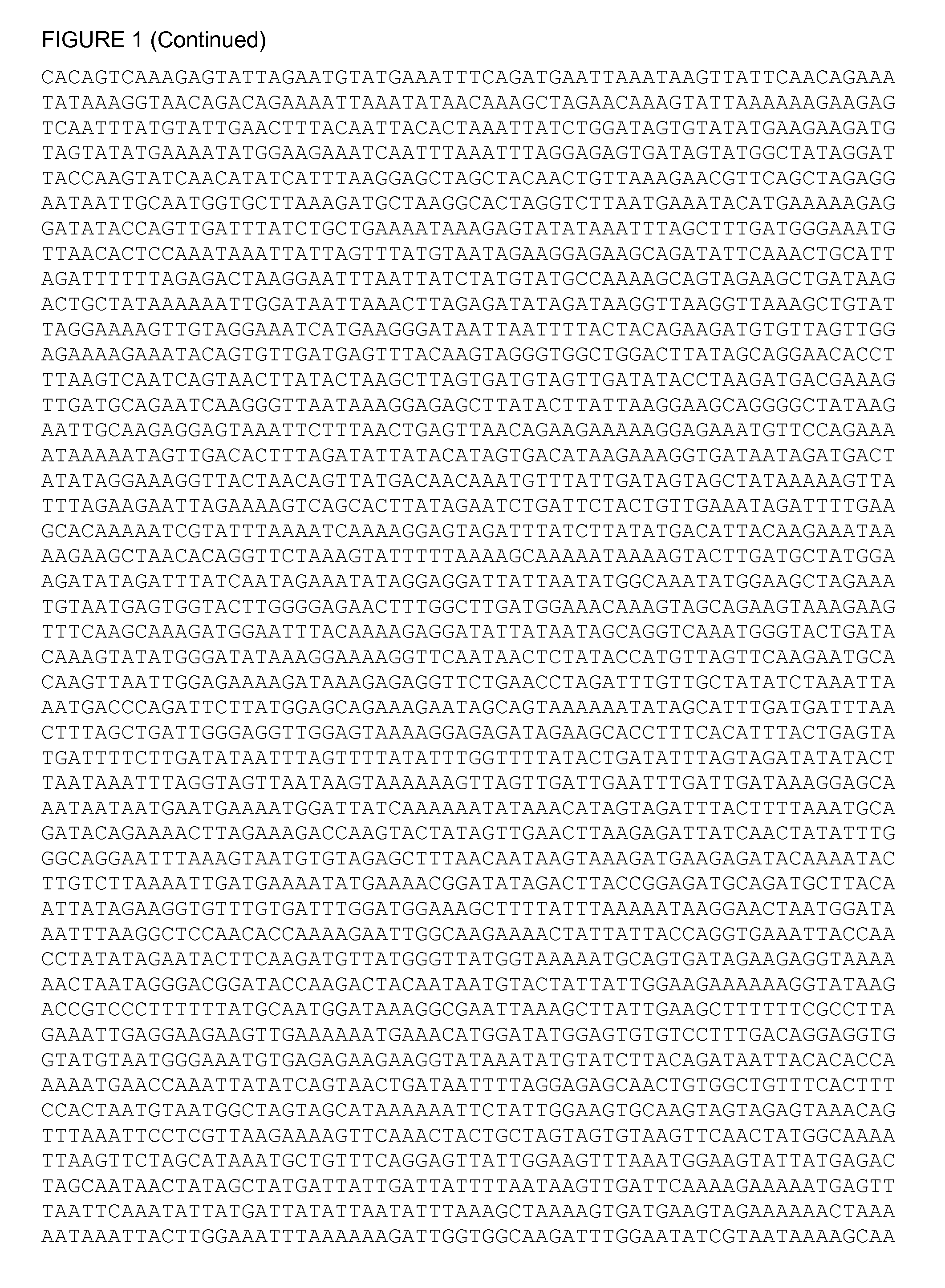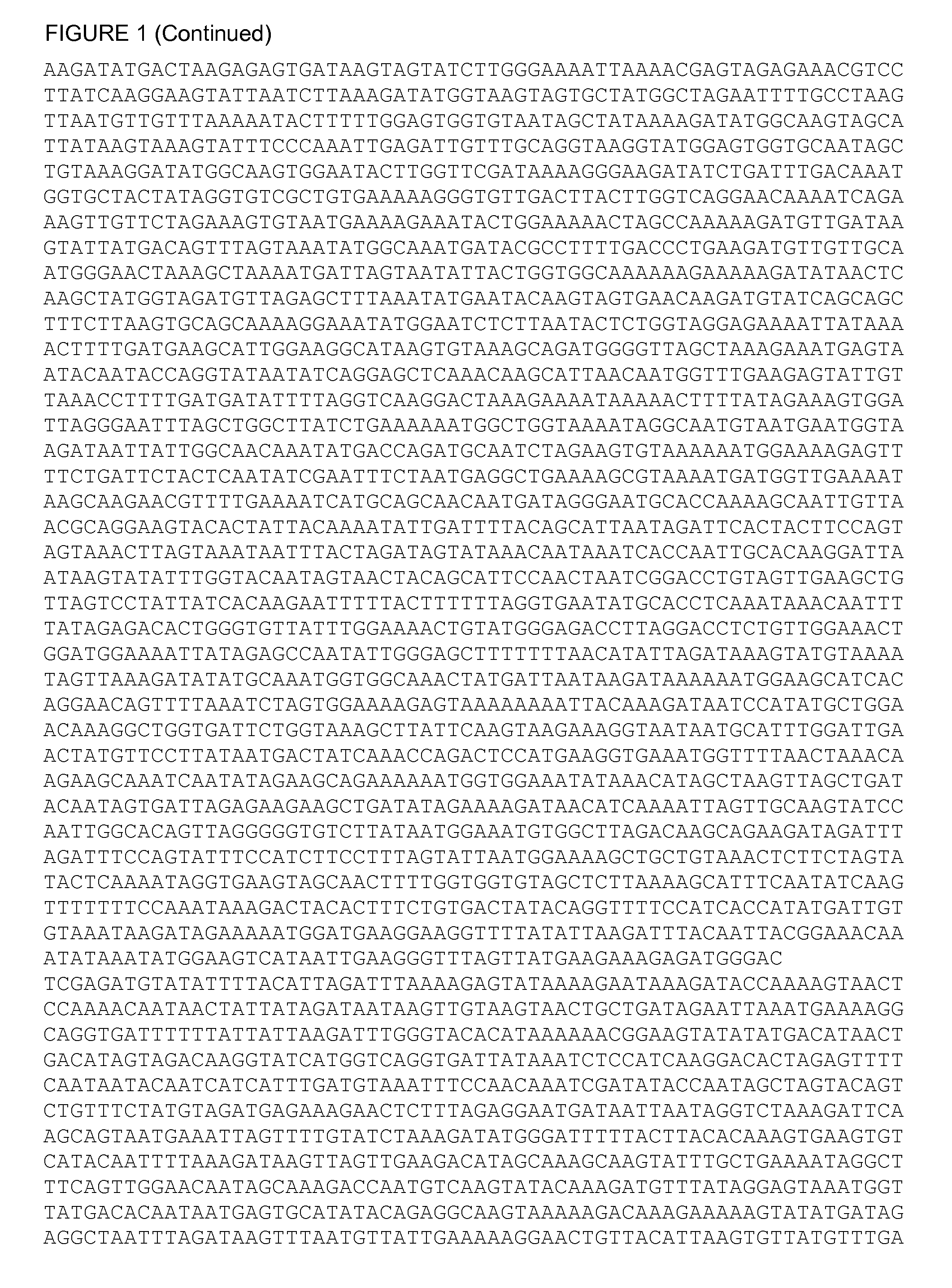Diffocins and methods of use thereof
a technology of bacteriocin and r-type, applied in the field of r, can solve the problems of not being able to detect and treat patients with i>c. difficile /i>, not being able to develop useful agents, and not being able to achieve the effects of reducing the probability of colonization, reducing the possibility of colonization, and reducing the number of patients
- Summary
- Abstract
- Description
- Claims
- Application Information
AI Technical Summary
Benefits of technology
Problems solved by technology
Method used
Image
Examples
examples
1. Determination of the Bactericidal Activity of Diffocins
[0085]C. difficile cultures were grown under strict anaerobic conditions in a Form a Scientific environmental chamber with an atmosphere of 10% CO2, 10% H2, 80% N2. All media, buffers, and plates were reduced in this atmosphere for at least 24 hours prior to use. Cultures were streaked on C. difficile selective agar plates (BD Diagnostics, BBL Cat. 222228), and incubated at 37° C. for two days. These plates as stocks were then stored anaerobically at ambient temperature.
[0086]To induce diffocins, C. difficile bacteria were grown in liquid cultures using Brucella medium (Difco) at 37° C. with no shaking. At an OD600 of approximately 0.2, mitomycin C was added to a final concentration of 3 μg / ml. Cultures were then incubated for 3-16 hours. Bacterial lysis was detected by a visual clearing of the culture.
[0087]Cultures were removed from the anaerobic chamber, and cellular debris was removed by centrifugation at 5,000×g. The sup...
PUM
| Property | Measurement | Unit |
|---|---|---|
| pH | aaaaa | aaaaa |
| concentration | aaaaa | aaaaa |
| pH | aaaaa | aaaaa |
Abstract
Description
Claims
Application Information
 Login to View More
Login to View More - R&D
- Intellectual Property
- Life Sciences
- Materials
- Tech Scout
- Unparalleled Data Quality
- Higher Quality Content
- 60% Fewer Hallucinations
Browse by: Latest US Patents, China's latest patents, Technical Efficacy Thesaurus, Application Domain, Technology Topic, Popular Technical Reports.
© 2025 PatSnap. All rights reserved.Legal|Privacy policy|Modern Slavery Act Transparency Statement|Sitemap|About US| Contact US: help@patsnap.com



